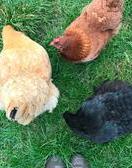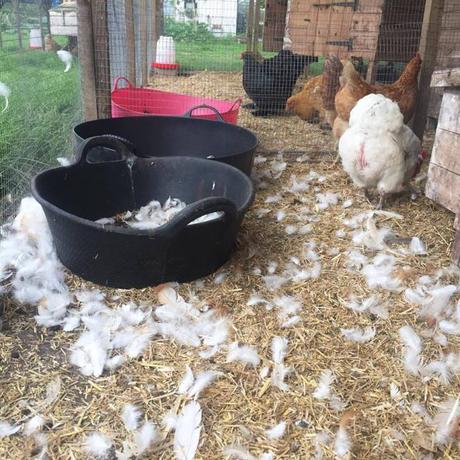
Around this time of year, when our chickens are going through their late autumn moult, coops and pens resemble a chicken crime scene. Huge bundles of feathers strewn everywhere!
For the new chicken keeper, experiencing chicken moult can be alarming! When your flock decide it’s time for a change of clothes feathers literally drop out overnight – covering the bedding on the coop floor. Sometimes a soft moult is all that’s needed, just an area of the body here and there, these partial moults often go on unnoticed, but when a hard moult is going on your chickens will look really scruffy for a while, perhaps even naked. Late summer to early winter is usually the time for moult but it can occur at anytime of the year. Your chickens may all go into a moult together or just 1 or 2 at a time.
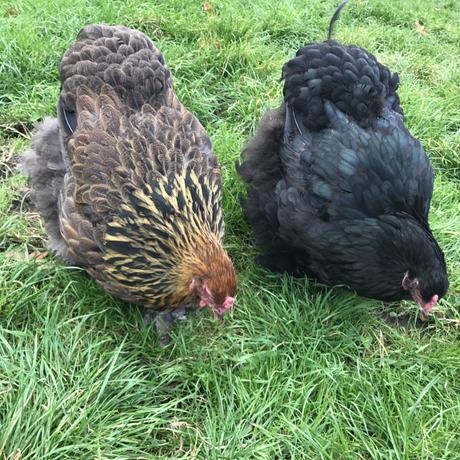
Moult is necessary to replace old and worn feathers in order to be in the best possible condition to keep warm in winter. Most chickens go through a moult without any issues but for others it can be hard going, thankfully there are things you can do to help your flock through it. Chicken feathers are composed mostly of keratin (a protein responsible for the strength of wool, hair, fingernails and hooves), so it’s a good idea to increase protein intake during the moult. Our girls love protein-rich dried mealworms scattered around or mixed in with the usual feed, we like to add them to a warm mash on a cold morning. Boiled eggs cut into chunks to disguise (you don’t want to encourage egg eating after all!), peas and sunflower seeds are good for protein too. These treats should be fed in moderation as and when needed for moulting chickens and not replace the usual feed. Adding tonics to the drinking water will help give a boost in vitamins and minerals, we recommend Life-Guard poultry tonic.
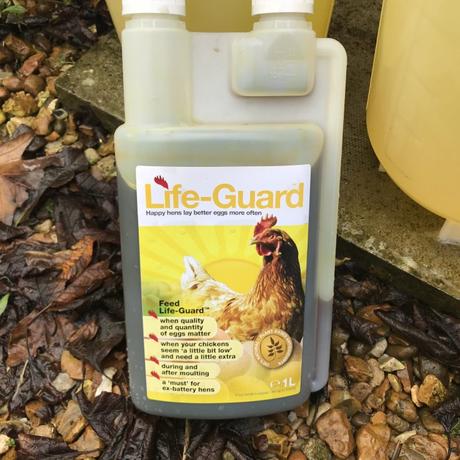
A hen going through a hard moult will either significantly reduce the amount of eggs she lays or stop altogether, putting all her energy into growing new feathers rather than producing eggs. You may even find the occasional soft-shelled egg while a moult is occurring, this should correct itself once the moult is over.
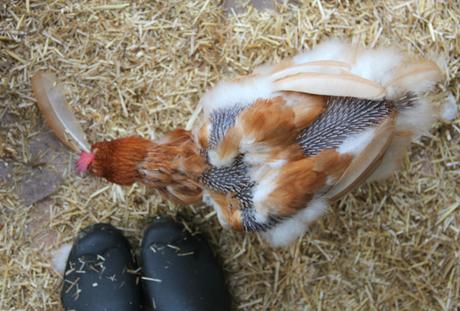
New feathers coming through are known as ‘pin feathers’, they look like blueish spikes pushing through the surface of the bare skin. Try to avoid picking your chickens up during this time, pressure on pin feathers can be quite painful for them. Pin feathers can be very attractive to other chickens, they really bleed if pecked! Keep an eye out for feather pecking problems and use purple spray (also known as gentian violet spray ) as an antiseptic and to help disguise red areas (chickens are very attracted to the color red, particularly blood) to discourage further pecking, separate if it becomes a real problem to avoid damage or worse.
Filed under: Chicken Health Tagged: backyard chickens, backyard farm, chicken feathers falling out, chicken health, chicken losing feathers, chicken moult, chicken moulting, chicken pin feathers, Chickens, hen moulting, hobby farm, how to care for moulting chickens, moult, moulting chicken, moulting hen, pin feathers, urban farm
